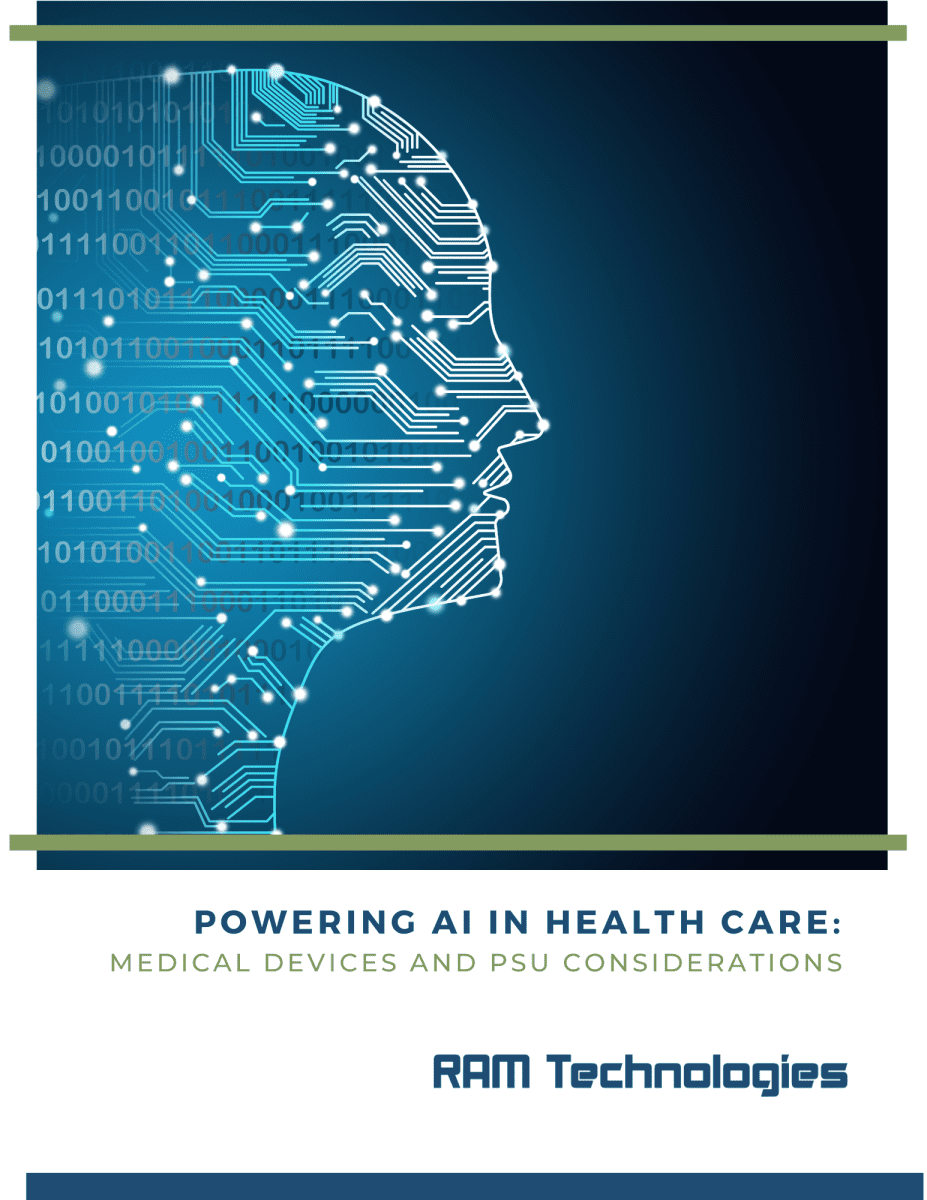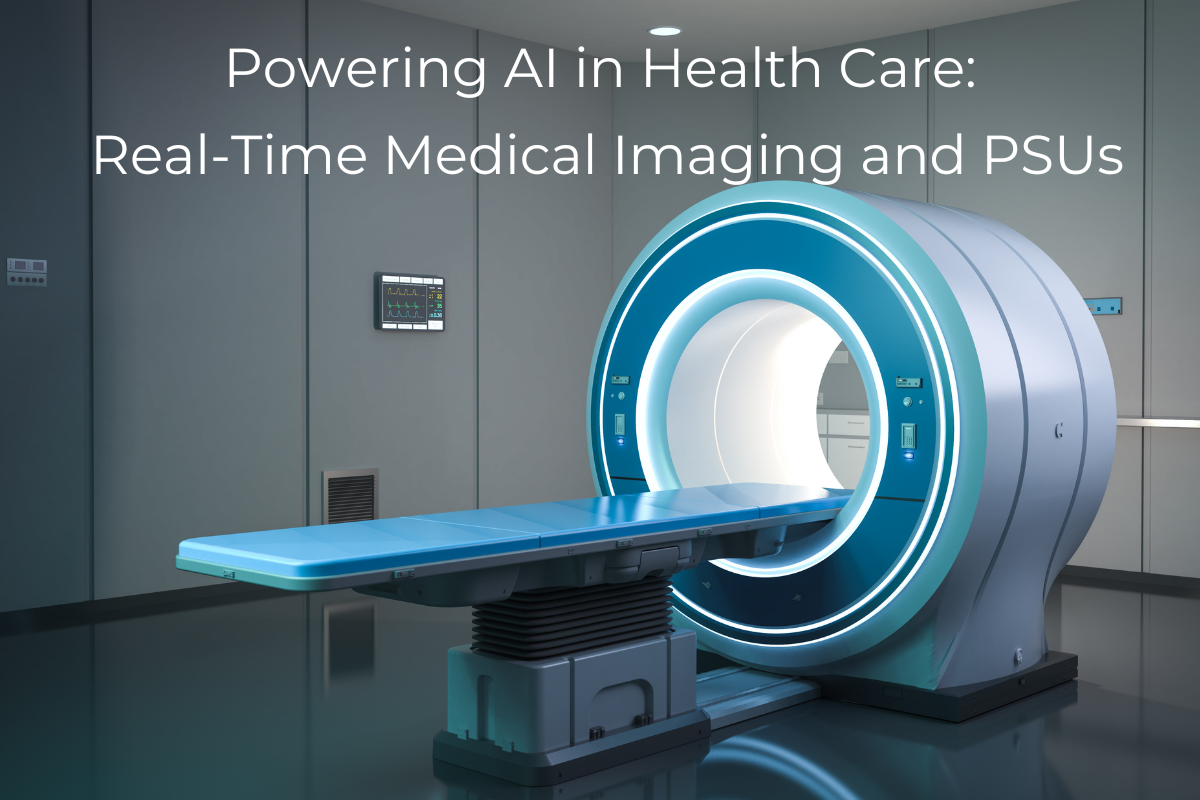Artificial intelligence (AI) continues to evolve and transform every industry, and healthcare is no exception. One of the most promising areas of development in healthcare technology is real-time medical imaging. With the help of AI-powered real-time imaging, clinicians can substantially improve the patient experience and even patient outcomes. However, greater computational abilities also come with greater demands on power. We’ll talk about the current trends with real-time medical imaging and AI in healthcare, and power supply considerations for these innovative devices.
What is Real-Time Medical Imaging?
Real-time medical imaging involves the instant and continuous capture of images of the human body. This is distinct from previous methods that produce static snapshots or limited recordings. Real-time imaging gives medical professionals the ability to see processes in motion and uncover valuable insights on a more granular level than can be provided by previous imaging techniques.
By gathering more comprehensive data and analyzing it more quickly, doctors can make faster decisions, more accurately, with less invasive measures, and see what’s happening in the body dynamically.
How is Real-Time Imaging Being Used in Health Care?
The use of real-time medical imaging is rapidly evolving in healthcare and has been applied to MRI, ultrasound, fluoroscopy, and more.
Image Segmentation
Separate objects in an image can be identified using AI to make a more granular analysis of these objects. For example, real-time imaging can be used to measure the volume and size of tumors or other abnormal growths.
Image Analysis
Algorithms can be trained to identify patterns and identify anomalies in patterns. Medical images, including X-rays, MRIs, and CT scans, can be scanned for abnormalities using real-time imaging to diagnose potential diseases more quickly with less invasive interventions.
Image Reconstruction
Incomplete data paints an incomplete picture for medical professionals, but AI can be used to fill in the gaps based on the data that has been provided. Images created with low-dose radiation may not be as detailed and helpful as they need to be, but AI can be used to enhance these images.
Image Guidance
Accuracy and safety in finely tuned procedures are essential, and real-time medical imaging can be used to direct these procedures. Biopsies and surgeries, where granular details matter, can be conducted more successfully with real-time image guidance.
What are Some Benefits of AI in Medical Imaging?
As an emerging field, employing AI in medical imaging can feel like a substantial undertaking with many challenges, but the benefits can quickly outweigh the barriers. When implemented successfully real-time medical imaging can:
- Assist with early diagnosis: For many health conditions, including cancer and chronic illnesses, early diagnosis and intervention are key to positive patient outcomes. Real-time imaging can help identify early signs of a condition and assist with early diagnosis, improving patient outcomes.
- Improve accuracy: One of the ways real-time medical imaging does this is through its increased accuracy. As long as the algorithms are trained to spot key abnormalities with high levels of accuracy, this accuracy can lead to more effective diagnoses.
- Increase efficiency: Human expertise is vital in the healthcare field, but not every task requires human intervention. By freeing up time from simple tasks, radiologists and other professionals can invest more time in complex cases.
- Reduce costs: Increased accuracy and efficiency cut costs in a couple of ways. Improved efficiency means fewer scans are generally needed, bringing costs down. Early diagnosis with less invasive techniques means that patients can spend more money on their course of treatment and less on the path to diagnosis.
What are Some of the Challenges With AI in Medical Imaging?
It’s easy to get excited about the next big thing in medicine. However, medical device manufacturers and clinicians need to understand the challenges involved in implementing AI in medical imaging.
Algorithms require a huge dataset to train. Patient privacy and the time it takes to train algorithms need to be taken into account before developing a device.
All medical devices need to go through regulatory approval processes to enter the market, and AI-powered devices are no different. While there aren’t currently specialized regulations for approval through the FDA, for example, the proliferation of artificial intelligence may lead to additional regulatory measures in the future.
It’s also important for medical device manufacturers to be able to explain how their AI algorithms make decisions. This way, clinicians can better understand the results and translate findings to their patients and the rest of the care team.
Medical Power Supply Considerations for Real-Time Imaging
Manufacturers also need to consider the kind of power that is needed to support real-time imaging. High-performance, medical-grade power supply units (PSUs) need to be extremely stable, efficient, durable, and reliable, while keeping safety at the forefront. Voltage fluctuations and power dips can lead to compromises in imaging quality, disruptions in surgical procedures, or spell danger for patients. The future of medical imaging relies on PSUs that will be able to handle high-performance computing without resulting in additional risks to the patient or operator.
Choosing the right medical power supply for real-time imaging equipment is about more than the technical specifications. It’s about working with a company that has deep expertise in the healthcare industry. They should understand both the current requirements and those that are likely on the horizon.
RAM Technologies offers medical-grade power supply units that are fully compliant with EN-60601-1 and all relevant standards. Our PSUs are customized to your needs and come with guaranteed performance for your high-powered use cases. If you have more questions about how our PSUs can support your AI-integrated medical devices, contact us today.
RAM Technologies’ power supplies are 60601-1 3.2 certified and meet 60601-1-2 EMC standards. When you’re designing your medical device and need help with a PSU, contact us for details.

Download the AI/ML Summary
Artificial Intelligence and Machine Learning (AI/ML) are changing the medical device landscape. Get a summary of the latest trends and where we think AI/ML can go with medical devices by downloading our guide.
More Resources:
Downloadable Guide to IEC 60601-1
Current Trends in the Medical Device Industry
Global Medical Device Industry Statistics
U.S. Medical Device Market Size – Should You Seek FDA Approval?



